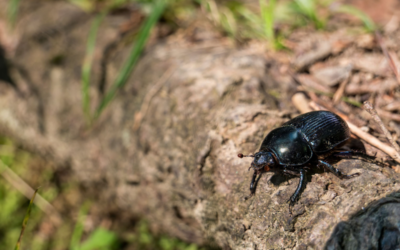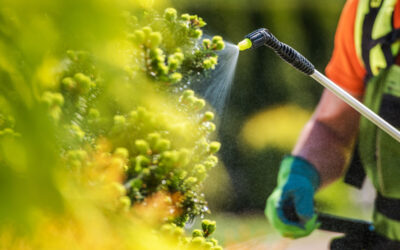Don’t Bug Out! A Guide to Common Tree Pests and Treatments
Trees are majestic additions to our properties, but just like us, they’re not immune to unwanted pests. These tiny invaders can wreak havoc on your trees, causing damage that can affect their health, appearance, and even lifespan. Here at Donovan Arborists, we’re here to help you identify common tree pests and explore treatments.
Pesky Culprits: Recognizing Common Tree Pests
- Aphids: These tiny, soft-bodied insects gather on leaves and stems, sucking sap and leaving behind a sticky residue called honeydew. Honeydew attracts ants and can lead to the growth of sooty mold.
- Leafhoppers: These small, jumping insects feed on the underside of leaves, causing white or yellow stippling.
- Caterpillars: The larval stage of butterflies and moths, caterpillars can munch through leaves, leaving behind ragged holes or completely defoliating branches.
- Scale: These armored or scale-like insects attach themselves to branches and stems, feeding on sap and weakening the tree.
- Borers: These beetle larvae burrow into the trunk or branches of trees, creating tunnels and disrupting the flow of nutrients. For more information, visit our page on the Emerald Ash Borer beetle.
Signs of Trouble: How to Spot a Tree Pest Problem
- Visible damage to leaves: Look for holes, chewed edges, discoloration, or premature leaf drop.
- Presence of insects or webbing: Keep an eye out for the pests themselves or the silken webs they may create.
- Sticky residue on leaves and branches: This could be honeydew, a telltale sign of aphids.
- Sawdust around the base of the tree: This could indicate the presence of borers.
- Weak or declining branches: Extensive pest damage can weaken branches, making them more susceptible to breaking.
Treating the Problem: Options for Pest Control
- Non-Chemical Solutions: For minor infestations, insecticidal soap sprays or horticultural oils can be effective. Encouraging natural predators like ladybugs and lacewings can also help control pest populations.
- Targeted Insecticides: When necessary, our certified arborists can apply targeted insecticides to control specific pest problems. We prioritize environmentally friendly options whenever possible.
- Preventative Care: Maintaining healthy trees with proper watering, fertilization, and pruning practices helps them better resist pest infestations.
When to Call a Professional
While some minor pest problems can be tackled with DIY methods, it’s always best to consult with a professional arborist in the following situations:
- Severe infestations
- Difficulty identifying the pest
- Unfamiliarity with safe and effective treatment options
Donovan Arborists: Your Partner in Tree Health
At Donovan Arborists, we have the expertise to diagnose pest problems, recommend the most effective treatment strategies, and implement them safely and efficiently. We prioritize integrated pest management (IPM) techniques, which combine various methods for long-term pest control while minimizing environmental impact.
Don’t let pests steal the show! Contact us today to schedule a consultation or use our online Free Estimate form and protect your trees from these harmful invaders. With our help, you can ensure your trees remain healthy, vibrant, and a beautiful asset to your property for years to come.




